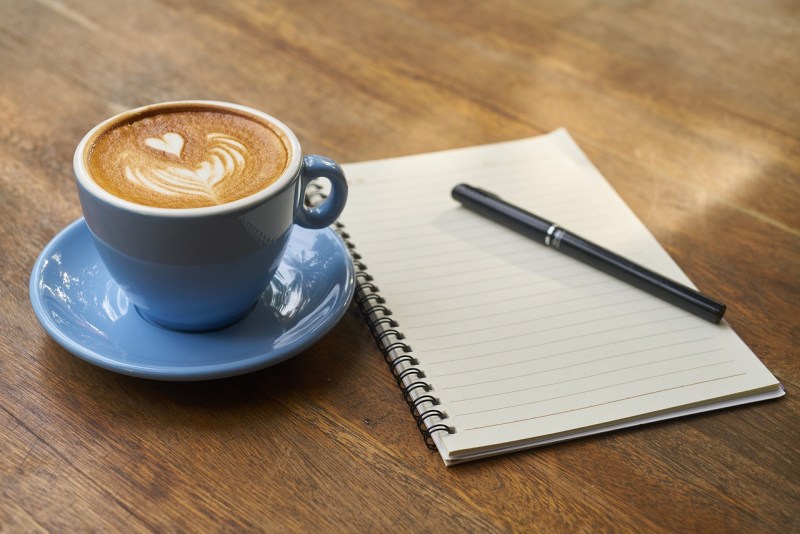A latte is the perfect, balanced coffee in terms of creaminess, with a light sweetness that doesn’t overpower the underlying taste of espresso. I once found making a latte at home overwhelming — as I’m no barista. Yet, mastering the art of making a latte at home is easier than I thought. While it’s not quite as easy as making a drink without steamed milk, such as the Americano, it only takes a few rounds of trial and error to master.
The hardest part is ensuring the correct 3:1 ratio of steamed milk to espresso. In no time, you, too, can replace your daily coffee shop run by making a latte right in your kitchen. Here’s what you need to know about mastering how to make a latte.
How to make a latte

The beauty of the art of latte making is the ability to craft and fine-tune your drink based on your unique preferences. No matter which latte recipe you follow, the basic steps of making a latte remain the same. A latte consists of three basic parts: espresso, steamed milk, and frothed/foamed milk on top. While the steps of preparing a latte always follow the same order, how you brew your espresso and steam and froth your milk can vary. The variations are up to personal preference and your ability to access specialty coffee-making gear such as an espresso machine or a milk frother.
If you visit your local coffee shop and order a latte, chances are the barista is making it with an espresso machine and a steam wand. Here’s how to follow this latte method at home.
Ingredients
- Freshly brewed espresso (one or two shots for a latte)
- Milk of choice (whole milk is used standard in a latte)
- Foamed milk
Method
- Using an espresso machine, brew one to two shots of espresso into a small glass.
- Place milk in a pitcher and use a steam wand to create frothy milk with microbubbles.
- Steam milk to about 150 degrees Fahrenheit. Swirl to break down any large bubbles.
- Pour the steamed and frothed milk over the espresso, ending with the foam as the topmost layer.
No espresso machine method

If you don’t have a fancy espresso maker handy, don’t fret. You can also brew strong coffee with an AeroPress, Moka Pot, or a French press that will serve as your espresso base when making a latte.
AeroPress method
Using the AeroPress method to brew “espresso” won’t leave you with the traditional crema from espresso that results from the pressurized brew of using an espresso maker. However, you can make a concentrated brew that can be used to replace traditional espresso shots. Here’s how
- Place the grounds in the basin with a paper filter.
- Add boiling water and stir for 30 seconds.
- Steep for 1 minute, then slowly press.
- Combine with 6 ounces of hot, frothy milk.
Moka Pot method
If you don’t have an espresso maker around but have a Moka Pot, you’re lucky to make a latte, too. A stovetop Moka Pot can be used to brew very strong coffee that’s similar to espresso. Here’s how:
- Pour hot water into the lower base of the Moka Pot and pour it into the fill line.
- Fill the basket with medium-fine grounds and tap it on the counter to settle the coffee; level it with a knife, but don’t tamp or press down to compact the coffee.
- Turn the stove on and wait for the coffee to come out.
- Remove the Moka Pot from heat while it’s still dense and creamy — leave it too long, and it will get watery.
- Continue with latte steps as normal.
Steaming and frothing milk
Making a non-dairy latte

Lattes get their delicious, indulgent flavor and texture because of the 3:1 ratio of milk to espresso. Three parts of milk are used for every part of espresso when making a latte — giving this drink a smooth, creamy, and slightly sweet taste. At times, I want something super indulgent; this is my go-to drink. However, as someone sensitive to dairy, I’ve mistakenly indulged in one too many lattes. Thankfully, lattes can be made with dairy-free milk alternatives to allow dairy-sensitive individuals or those following a vegetarian/vegan diet to enjoy a creamy latte, too.
According to Rene Awada, owner and head chef at Healthy Fitness Meals LLC, “People can replace the steamed milk with almond, soy, or oat milk to make a dairy-free version of the latte.”
Even if you’re not sensitive to dairy, the hefty amount of milk used within a latte can add a lot of fat and calories to your drink. Many choose dairy milk alternatives for their latte to create a healthier twist on the drink.
“I love this substitution because it’s a healthier option and gives a slightly nutty flavor to the latte, which I enjoy. This is also a good alternative for those who are lactose intolerant/have milk allergies. I think it’s much better to use the unsweetened versions of these milk substitutes since they already have a natural sweetness, and you don’t want to overpower the espresso flavor,” Awada said.




